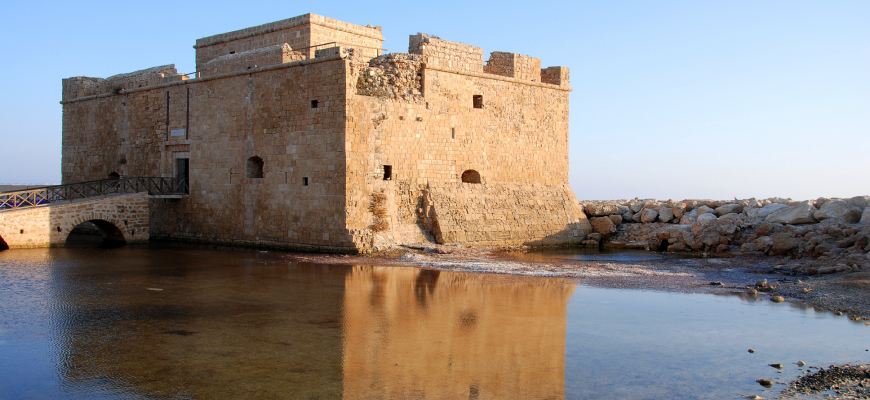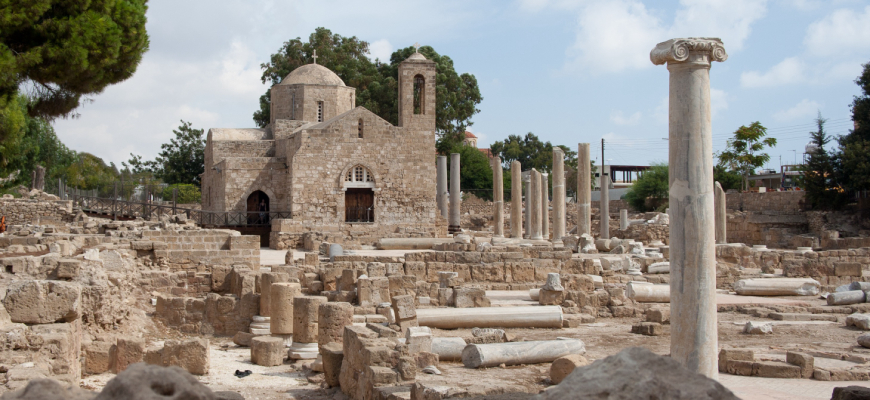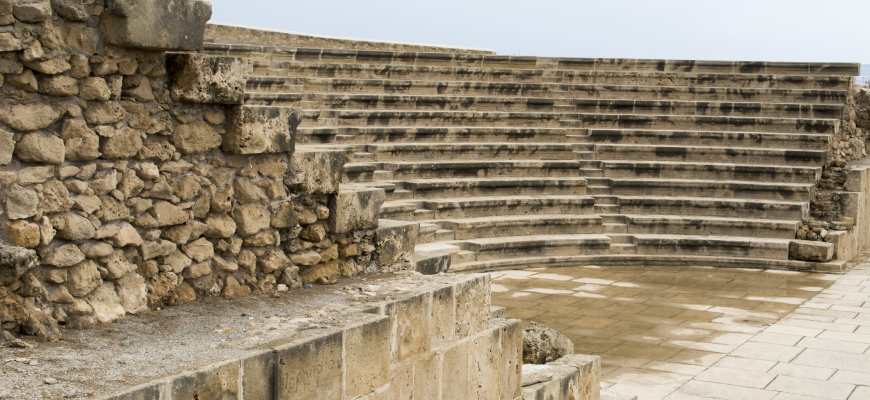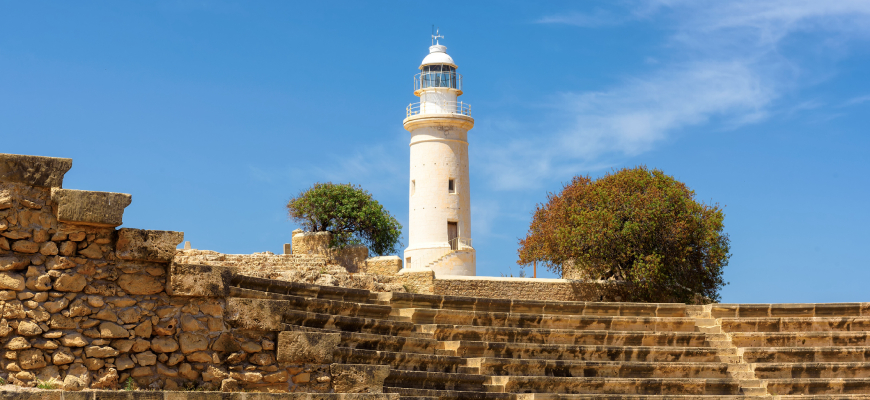Paphos boasts a long-age history, with surviving evidence of its past dating as back the Neolithic period the age modern civilisation dawned. Interwoven with myths about gods and goddesses, and sagas of mighty warriors and devout saints, Paphos history rivals its sublime physical beauty.
Since you need a warm-up before getting there in the first place, we thought of shedding some light on some of the most important cultural and historical sites in Paphos information that will be deeper engraved into your mind when coupled with actually seeing the attraction during our Paphos Segway Tour. Yes, joining a Paphos Segway Tour will get you smarter.
The Medieval Fort of Paphos
 Built by the Byzantines in an effort to quell raiders from storming the island’s western shores and protect the harbour, Paphos medieval fort was actually almost utterly destroyed by the great earthquake of 1222, which shock the town to its core.
Built by the Byzantines in an effort to quell raiders from storming the island’s western shores and protect the harbour, Paphos medieval fort was actually almost utterly destroyed by the great earthquake of 1222, which shock the town to its core.
Soon, crusaders managed to dominate the area and, naturally, inherited the concerns that troubled Byzantines before. The famed and vastly wealthy family of the Lusignan’s rebuilt the fort at their expense, making it much bigger and stronger.
Early Christian Basilica of Panagia Chrysopolitissa
 The Panagia Chrysopolitissa church is seven hundred years old, standing on the ruins of the largest Early Byzantine basilica in Cyprus. Its biggest cultural treasure is St. Paul’s Pillar, a marble stele that, according to a medieval legend, was the spot Paul was chained and tortured by Roman authorities while preaching the gospel across the island. While the tale is not included in the account of the Acts, which is the most extensive and reliable account of Paul’s preaching ministry, the legend has survived for centuries.
The Panagia Chrysopolitissa church is seven hundred years old, standing on the ruins of the largest Early Byzantine basilica in Cyprus. Its biggest cultural treasure is St. Paul’s Pillar, a marble stele that, according to a medieval legend, was the spot Paul was chained and tortured by Roman authorities while preaching the gospel across the island. While the tale is not included in the account of the Acts, which is the most extensive and reliable account of Paul’s preaching ministry, the legend has survived for centuries.
Initially, the church was much bigger, encompassing seven different aisles, but later phases preserved just five of them. While there, note the floor of the basilica and its elaborate mosaics.
The Ancient Theatre
 Lying in the north-eastern corner of the ancient Paphos site, the ancient theatre was built at the last quarter of the 4th century BC, when the island flourished financially under the control of the Ptolemies, the Hellenistic rulers of ancient Egypt and southern Palestine.
Lying in the north-eastern corner of the ancient Paphos site, the ancient theatre was built at the last quarter of the 4th century BC, when the island flourished financially under the control of the Ptolemies, the Hellenistic rulers of ancient Egypt and southern Palestine.
During the time, Paphos was the island’s capital, and local authorities thought it right to adorn the city with marble coated monuments and public buildings that would highlight its eminence with added kudos.
Erected partially at the side of a hill, the theatre largely rests on an artificial embankment, with rows of stone-lined seats shaming its semicircular front. Its round orchestra, with its excellent acoustics, hosted some of the greatest Greek tragedies ever written.
The Medieval Ottoman Baths
 The Medieval Ottoman Baths, or Hammam as the Ottomans called it, near Paphos Old Market, were actually part of a much more extensive edifice. Featuring the usual layout of the stone-vaulted Hammams, it encompasses three main spaces: one for undressing, another for warming up and the third for really sweating yourself out.
The Medieval Ottoman Baths, or Hammam as the Ottomans called it, near Paphos Old Market, were actually part of a much more extensive edifice. Featuring the usual layout of the stone-vaulted Hammams, it encompasses three main spaces: one for undressing, another for warming up and the third for really sweating yourself out.
The Paphos Lighthouse
 Possibly the most well-known lighthouse across the island, the Paphos Lighthouse dominated the homonymous peninsula that pierces through the Mediterranean Sea at the island’s southwestern shore.
Possibly the most well-known lighthouse across the island, the Paphos Lighthouse dominated the homonymous peninsula that pierces through the Mediterranean Sea at the island’s southwestern shore.
The lighthouse is quite old. It was constructed in 1888, when the island was dominated by the British and served as their major naval base in the Eastern Mediterranean, guarding the sea passage that took merchant ships from the Suez Canal to the colonies. It is 20 metres high, and its light can be discerned from as far as 17 nautical miles away!
Don’t you feel much smarter already? Now you can share some of these interesting facts with your buddies and family while approaching the island. However, don’t forget to live the whole thing by joining one of our Paphos Segway tour. Don’t delay, book today!




